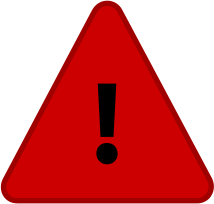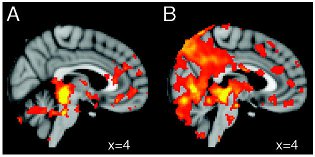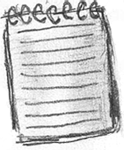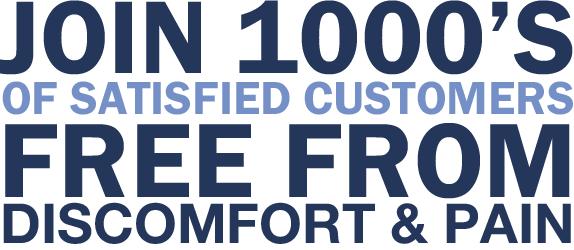According to the Migraine Research Foundation, nearly 1 in 4 households in the U.S. has a family member who suffers from
migraine headaches, and more than 90% of migraine sufferers are unable to work while they are suffering from a migraine.
The constant lingering fear of when another attack may occur can lead to anxiety and depression. Thankfully, recent
groundbreaking research has found a safe and effective migraine treatment that targets the root cause of the
migraine instead of just treating your symptoms.
If you suffer from migraine headaches, you probably know about some of the most common treatments for migraine headaches. Until recently, most of the treatments involve medications that don’t cure your migraines and fall into two categories:
Preventative Medications:
Preventative medications attempt to diminish the severity or frequency of migraines, but they usually don’t eliminate your migraines. In addition, these expensive drugs can damage your liver, kidneys, and even your central nervous system.
Pain Relieving Medications:
These medications don’t help to reduce the frequency or severity of your migraines, and they don’t prevent your migraine from occurring. They are taken only after your migraine has already begun, and are used only to alleviate rather than eliminate the symptoms. These drugs can drain your bank account, even if you have insurance.

If you prefer to treat only the SYMPTOMS of your migraines, and you don’t mind taking potentially harmful prescription drugs for the rest of your life, then one of the above remedies will suffice, and there is no need to keep reading. However, if you’re seeking a holistic solution that helps you target the real cause of your migraines, we invite you to continue reading.
Recent medical research has shown that the brains of migraine-sensitive people are structurally different from the brains of non-migraine-sensitive people. In 2007, Harvard University’s Dr. Nouchine Hadjikhani conducted brain scan research at the world-renowned Massachusetts General Hospital. Her research found that the brain’s somatosensory cortex was 21 percent thicker in a key region in people who suffered from migraines, compared to those who did not. The key region is the part of the cortex responsible for processing sensory information from the head and face (including the teeth). Sleep is a key time when the brain needs to regain neurotransmitter balance, and it appears that in migraine sensitive brains, when signals stream into this sensitized part of the brain during sleep that needed balance may not be achieved, leaving the brain vulnerable to having a migraine triggered the next day.

The area of greatest difference in migraine-sensitive brains is shown within the blue region above
Nighttime teeth clenching puts pressure on the roots of the teeth and the trigeminal nerve. This pressure sends signals streaming into a region of the brain that is trying to recover neurotransmitter balance. This leaves your brain imbalanced and vulnerable to being "knocked over" into a migraine by changing conditions (like a flash of light or a loud sound) any time within the following day or so. Unlike teeth grinding, which makes noise and leaves teeth worn, clenching is silent and often leaves no telltale signs. Thus many people who clench while sleeping don't know they are clenching, and that the clenching allows their migraines to happen.
Grinding is the act of clenching and moving your bottom jaw back and forth, which grinds away the enamel from your teeth. Unlike clenching, which can be silent, grinding will often produce a noticeable sound that could wake a sleeping partner.
Clenching is when your upper and lower teeth are held together with prolonged force. It may leave no visible signs, but can damage the roots of teeth, the trigeminal nerve, and the temporomandibular joint. Nighttime clenching often becomes an addictive habit, because part of the subconscious mind finds the sensation of clenching soothing. Nighttime clenching leaves the brain imbalanced and susceptible to being "knocked over" into migraine overload.
If you’re like most people who clench their teeth, you probably have no idea that you clench your teeth in your sleep. Because clenching often leaves no telltale signs, you can suffer needlessly for years without ever realizing you clench. Tens of millions of people around the world clench their teeth at night without knowing it. Besides being linked to Migraine Headaches, teeth clenching can also lead to jaw pain, tooth pain, and TMJ Disorder.
When you clench your teeth in your sleep, the pressure on the roots of your teeth sends signals streaming into your brain’s somatosensory cortex at a time when it is trying to recover brain chemistry balance. These signals streaming in when "quiet time" is needed leave your brain chemistry imbalanced, and vulnerable to getting "knocked over" into migraine overload.

Brain above on right (in migraine overload) is using oxygen much more and differently from non-migraine brain on left
Brains that are not migraine-sensitive can handle the rush of signals from nighttime teeth clenching, but migraine-sensitive-brains become imbalanced by these signals, so that later in the day, the brain is much more easily "knocked over" into a migraine. The migraine often doesn't start until some condition (like a flash of light or a smell or a sound) knocks the brain over into migraine overload.
Once your migraine starts, the oxygen-usage patterns of your brain shift radically, and the brain literally goes into an overload state. The image shown on the left is from some of the migraine research completed by Dr. Hadjikhani, and shows the difference in oxygen usage patterns in the brain of a person not having a migraine (on the left), compared to the same brain in migraine overload (on the right). Most migraines keep going until the overload condition burns itself out, which can take as long as three days.
If you are suffering from migraines caused by nighttime teeth clenching, you are not alone. Teeth clenching can start during stress, and often becomes a habit which the brain finds addictively soothing during sleep. Fortunately, like any habit, nighttime teeth clenching can be eliminated by re-training your subconscious mind. Finally, nighttime biofeedback brings you the tools to re-train your subconscious mind while you sleep, eliminate nighttime clenching, and free yourself from migraine pain.
This revolutionary biofeedback headband uses advanced technology to retrain your brain to respond to clenching in a new way. As you sleep, the headband detects when you clench your teeth, and makes a subtle sound which lets your brain learn to instinctively stop clenching. This is the same basic technique of classical conditioning used in the Pavlov experiment that you probably learned about in school.
Want to know the best part? This re-training can take place while you sleep, without waking you up.


A clinical efficacy study released by Holistic Technologies on January 1, 2013 showed the positive results that migraine sufferers experienced from using the biofeedback headband. Participants who suffered regular migraines before the trial found that using nighttime biofeedback to reduce their nighttime teeth clenching enabled them to eliminate or drastically reduce their migraines.
The biofeedback headband is easy to use, so unlike something complicated like a cell phone, it only takes a few minutes to learn how to operate, and most people start to see results within a few days. This comfortable headband is worn in your sleep and senses tiny muscle signals (EMG signals) that indicate you are clenching your teeth. The device makes a soft sound that increases gradually so it doesn’t wake you. The audible cue tells your brain to relax and stop clenching, which stops the stream of signals into the migraine-sensitive part of your brain, so your brain can come into proper balance, so it can't be "knocked over" into migraine overload the next day. Practicing while awake for only a couple of minutes per day will drastically improve your response when sleeping.



The biofeedback headband has helped thousands of people like you become free of migraines by eliminating the nighttime teeth clenching that would have allowed migraines to get triggered later.
Listen to the success stories from our many happy customers who are now free from debilitating migraines.

Linda L. (interviewed by Lee Weinstein) shares about years of suffering with TMJ pain and daily migraines. She tried jaw reconstruction surgery, NTI (which made things worse), anticonvulsants, narcotics, antidepressants, antipsychotics, Botox injections, had a total hysterectomy (yes, some doctors tell people to do that), spent over $10,000 on dentists, got some relief through an orthotic, and within 10 nights of using the SleepGuard biofeedback headband she was out of pain. Within four months, she could go months without wearing it.

Michele Y. (interviewed by Elizabeth Carrington) ground her teeth and got headaches for as long as she can remember. Mouth guards and muscle relaxants did nothing for her jaw pain and headaches. The NTI made things worse. Using the SleepGuard biofeedback headband, she went from 15 headaches per month to one or two per month, and got rid of her jaw pain.

Elizabeth Carrington (interviewed by Lee Weinstein) tells of her 20-year struggle with migraines, which finally ended with the SleepGuard biofeedback headband. She went from having migraines at least 3 days per week, to having no migraines for over a year.

Diane Lawrence (interviewed by Elizabeth Carrington) had many different mouth guards, but clenched so hard her jaw and fibromyalgia hurt terribly. Muscle relaxants didn’t help. She tried the NTI and it "screwed up her jaw". She now thinks of her life as “before SleepGuard and after SleepGuard".

Liz Gardner (interviewed by Elizabeth Carrington) shares of getting her years of migraines and TMJ problems under control with the SleepGuard biofeedback headband.
"I was a serious grinder, but in a matter of weeks, SleepGuard helped me stop grinding my teeth. No more headaches. No more sore jaw. And best of all, I haven't had to wear a night guard in over a year!"
- L. Russell, Boston
"Before SleepGuard, every morning I would wake up feeling like I had been through a 10-round fight. My jaw and temples were tender and throbbing…my eyes were bloodshot. I searched the Internet for years for something that would help, and finally found an answer. When your package arrived, I was eager to try it and have been satisfied with the results ever since."
- K. Meehan, New York City
"I'm simply amazed at how effective this device has been for me. Averaging the first 30 days of data shows that I dropped from over 9 seconds of clenching per hour to less than one second per hour.
I was quite skeptical before using it, but the three-week free trial period convinced me to give it a try. Initially I was concerned that the alarm would constantly wake my spouse, but it hasn't been a problem at all.
Thank you for making such a device available at a reasonable price."
-Ron Blackstock, Saint Petersburg, FL
"Your product is unbelievable - I would not know where I would be without it!"
- Sito, Redwood City, CA
"Thank you for creating this product for people with bruxism who have nowhere else to turn after trying conventional remedies. The product has helped me immensely and has reduced my clenching significantly. I will recommend this product to anyone with this problem."
- Kirsten, Cape Coral, FL
"My grinding and neck pain are greatly reduced since purchasing my SleepGuard biofeedback headband, thank you."
- Anne McCullagh Rennie, Australia
The Biofeedback Headband costs about the same as a dozen migraine pills such as Imitrex, and it’s only a one-time purchase, so there are no ongoing costs required other than replacing batteries and sensor pads. The pricing starts as low as $295.00, and flexible payment arrangements are also available, including a lease option. This means that you can eliminate your migraine headaches for less than 30 cents per day. All major credit cards are accepted, and we even offer refurbished units at a discounted rate. We’ll even let you try it risk free for 30 days. Compared to the cost of medications and the pain and suffering that you endure from migraine headaches, the cost is quite low.